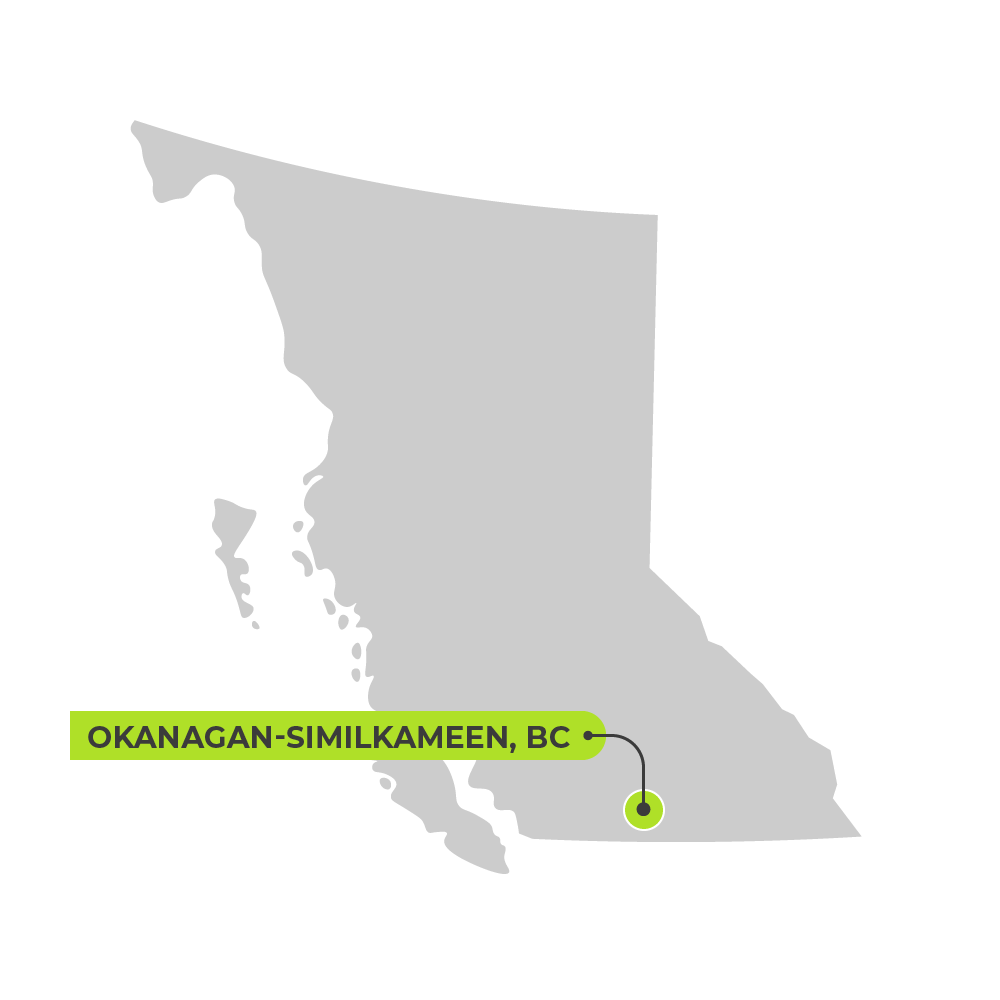
The Regional District of Okanagan-Similkameen, BC, extensively studied the viability of a new composting facility that would divert the region’s considerable organic waste from landfill.
Results

$25 to $42 per tonne
in potential savings on tipping fees with new composting site

12,873 tonnes
of organics potentially diverted from landfill per year

3,500 to 3,800 tonnes
of CO2e potentially reduced per year
In 2012, the Regional District of Okanagan-Similkameen took on a comprehensive feasibility study to identify the best site, equipment, methodologies and management options for a new composting facility.
Renowned for its picturesque orchards and world-class vineyards, the regional district holds significant potential for organics diversion. With agriculture and tourism at the core of its economy, over 40 percent of the district’s waste stream is made up of organics. The regional district wanted to explore options to process commercial and residential food waste, along with yard waste and other biosolids, at a single location, and sell the resulting compost.


The study compared government-run and private-sector composting options. It looked at possible effects on long-term land use planning, the environment and service costs. It also evaluated composting equipment and methods. The study’s recommendations included options for how to best manage the site to divert as much organic waste from landfill as possible. Seven potential sites were thoroughly analyzed and compared.
The project team held public consultations to respond to residents’ questions and concerns around a new composting facility. They also met with local agricultural groups to understand the type and quality of compost that would best meet various local needs. Residents’ top concern was odour control, and extensive odour modelling was a focal point of the study. While some of the modelling results were concerning to some residents, the data proved invaluable to the district.
The three-year study predicted that diverting food waste from landfill would reduce methane emissions and leachate and significantly extend the life of existing landfills. Depending on the approach taken, between 3,500 and 3,800 tonnes of carbon dioxide equivalent (CO2e) could be avoided each year.
The study also showed that the compost would benefit agriculture and the quality of produce grown in the region, supporting the local economy. The facility would create a small number of new jobs and bring in revenue through compost sales. Diverting food waste would also save money—with the expected tipping fee for composting food waste estimated at about $85 per tonne compared to $110 per tonne for disposal.
While the hunt for a site to host the future organic waste processing facility continues, this comprehensive study provided the district with a solid foundation for its future facility.
Photos courtesy of Tetra Tech, Inc.
Our comprehensive feasibility study showed the need for one high-tech regional site for commercial food waste, wastewater sludge and urban residential food waste. Our elected officials are able to make this large-scale decision because of the feasibility study.”
—Cameron Baughen, Solid Waste Management Coordinator, Regional District of Okanagan-Similkameen
Want to explore all GMF-funded projects? Check out the Projects Database for a complete overview of funded projects and get inspired by municipalities of all sizes, across Canada.

